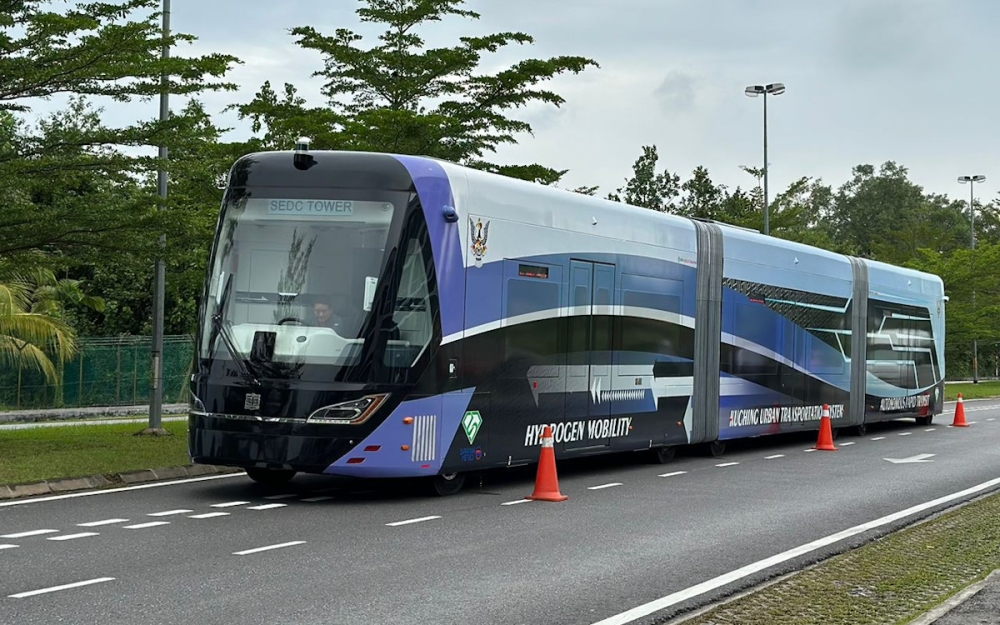JULY 10 — As Malaysia stands at the crossroads of a pivotal energy transformation, the burgeoning potential of the hydrogen economy offers us a unique opportunity to redefine our energy landscape and contribute meaningfully to the global effort in decarbonisation. With the Asia-Pacific region poised to be the next hydrogen superpower, Malaysia’s strategic location and ongoing initiatives uniquely position us to play a crucial role in this transformative era.
The Hydrogen Economy and Technology Roadmap (HETR), which I had the honour of launching as guided by the Ministry of Science, Technology, and Innovation, is a testament to our commitment. This roadmap does not merely set forth a vision but meticulously lays the groundwork for Malaysia to become a key player in the hydrogen value chain by 2050.
The rationale for this focus is clear. Hydrogen holds the key to solving many of the energy challenges that our region faces — energy security, affordability, and sustainability. As part of our National Energy Policy 2022-2040, the transition to a hydrogen-based economy is not just strategic but essential. It promises to significantly reduce greenhouse gas emissions — by up to 15 per cent by 2050 — while potentially generating more than RM400 billion in revenue and creating up to 200,000 jobs.
Our approach is multi-faceted, focusing on accelerating the adoption of green hydrogen. Leveraging our unique topographical advantages, especially in Sarawak, we are well-positioned to harness hydropower capabilities extensively. Currently, Sarawak’s hydropower capacity stands at 3.5 gigawatts, with plans to increase this by an additional 1.3 gigawatts in the near future. This robust hydropower infrastructure is pivotal as we aim to achieve a levelised cost of hydrogen as low as US$1 per kilogram, making it competitively priced on the global market. Our strategic use of renewable resources and innovative technologies plays a crucial role in reducing production costs and facilitating the broader use of hydrogen across mobility and industrial sectors. This combination of natural advantages and strategic investments positions Malaysia as a leader in the global hydrogen economy and underlines our commitment to a sustainable energy future.

Collaboration is at the heart of our strategy. The ‘Build Some, Buy Some’ approach underscores our intent to blend local innovation with global technology. This includes fostering partnerships with leading international corporations to enhance our technological capabilities and infrastructure. We are equally committed to nurturing local talent and expertise through initiatives like the Hydrogen Centre of Excellence, ensuring that Malaysia not only contributes to but also benefits from the hydrogen economy.
The journey is already underway. From the Petronas Advanced Proton Exchange Membrane Electrolyser, developed in collaboration with the National University of Malaysia, to international ventures like the collaboration with Japan’s Eneos Corporation, Malaysia is actively shaping its hydrogen future. Tenaga Nasional Berhad, our national utility company, has embarked on an ambitious project to co-combust ammonia in the power sector, in partnership with IHI Power System Malaysia Sdn Bhd. This initiative not only highlights our drive towards innovative energy solutions but also our capacity to integrate these technologies into existing infrastructures, These projects underline our technological aspirations and demonstrate our capability to be a reliable and innovative partner in the global hydrogen market.
As we host discussions and collaborations at international conventions, such as the recent gathering where stakeholders from across the Asia-Pacific region shared insights and strategies, it is clear that our collective efforts are pivotal. Together, we can address the challenges and harness the opportunities that the hydrogen economy presents.
By embracing the hydrogen economy, Malaysia does not just aim to participate in a global movement; we aim to lead it, ensuring a prosperous and sustainable future for the next generations.
* This is the personal opinion of the writer or publication and does not necessarily represent the views of Malay Mail.





















